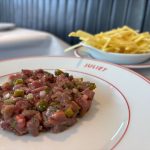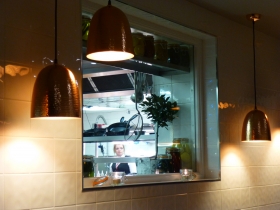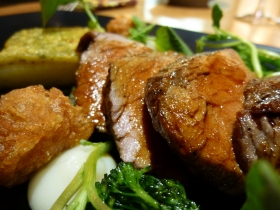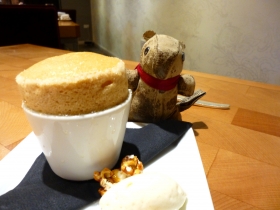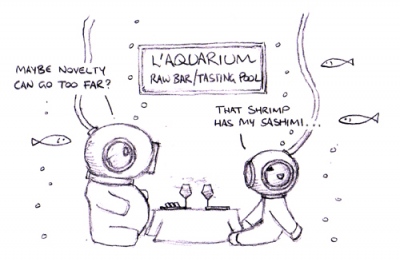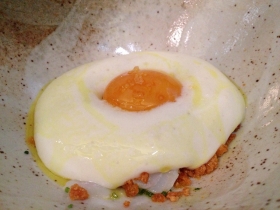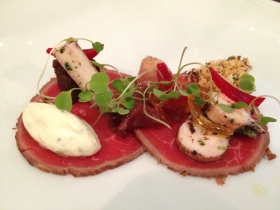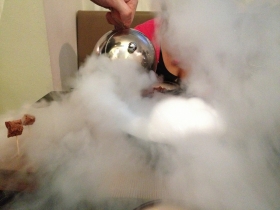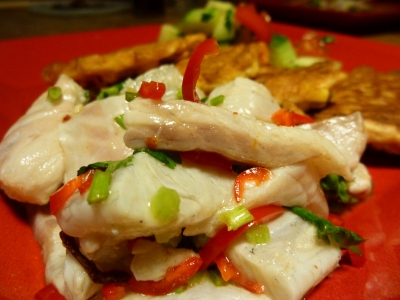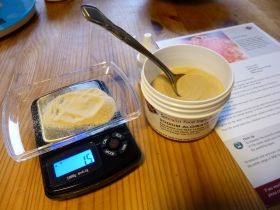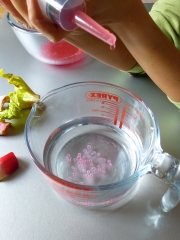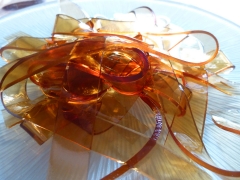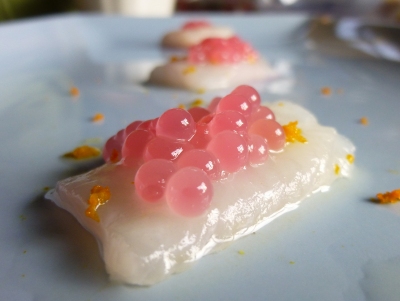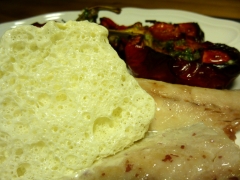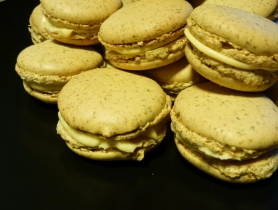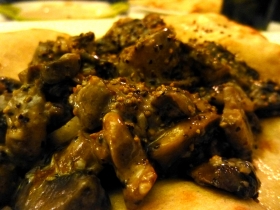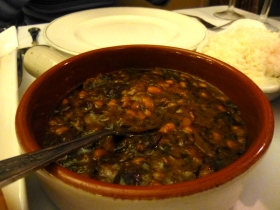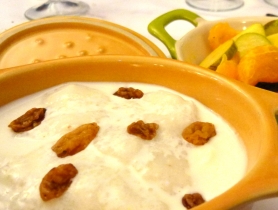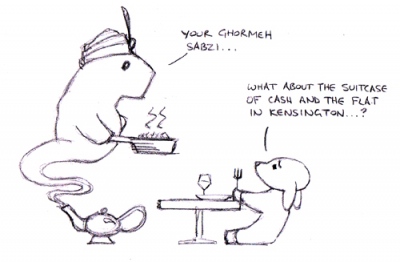Rumours of the death of fine dining are much exaggerated. In fact, I’d say that in dining rooms up and down the land fine dining is getting busy exploring new ways to stay relevant and special. I’m going to remember cooking my own steak at the Savoy Grill for a long time. And yesterday we were served a seven course tasting menu by chef Will Holland of La Becasse in the “No 1 Vaults Tasting Room”.
When I say chef served us, I do actually mean that he brought every dish to the table, introduced it and then loitered for questions if we had any.
The Tasting Room is akin to the idea of a chef’s table, but in this case it’s a small private room with big windows into the kitchen and three tables. So it can cater to three parties at once, and apparently the presence of chef and the shared experience of the tasting menu tends to break down barriers and actually get people talking. Yes, talking!
However, this Wednesday lunchtime we were the only couple in the Tasting Room. On the one hand, service doesn’t get any more personal than this and the opportunity for a long chat with chef was unique. On the other hand, I felt even more on show than the kitchen. That glass is two-way after all. It was mildly surreal and I keenly felt the need to be a witty and interactive diner.
Of course, this is the introvert in me talking. Other introverts reading this will squirm in sympathy. Proper dyed-in-the-blood extroverts would have been in hog heaven, bantering away with chef and his front of house team. In fact I have to applaud Will and the team for making us feel so welcome, I relaxed quickly and forgot our splendid isolation. Service was excellent (and of course personal) throughout.
The room itself is cool neutrals, warmed by beaten copper light fittings. It needs some art on the wall, but that’s apparently on the way. Bowmore have obviously put some money into this, as I should more properly call it the “Bowmore No 1 Vaults Tasting Room” and
there are a few little touches to remind diners of the sponsorship. Nothing in-your-face, and Bowmore is after all a good whisky. Well, I’m partial.So, we enjoyed a seven course taste of delicious food. I’ve already reviewed the food at La Becasse, and it is still every bit as excellent as the day the idiot Michelin inspector visited (perhaps with orders from head office to knock one of 10-in-8’s stars off?). My favourite dishes this time…
- From the canapes a beignet of bone marrow, in which Will had managed to neatly catch the fleeting carnivorous taste richly.
- Foie gras of a beautiful cafe creme colour, silken and perfect. It wasn’t frozen, spiked or covered in acrid ginger powder. Only recently I was bitching about being bored with foie gras, having had altogether too much of it. Now I realise that I’d just been having very annoying foie gras.
- A piece of cod with a soft herb crust, so delicate it was like eating fishy clouds, which you’ll just have to accept is a very good thing as I can’t think of a way to describe it better.
- Finally I enjoyed my favourite souffle for long time. It was light and flavoured with nothing but caramel, served with burnt marshmallow and a dollop of clotted cream ice cream. So far as I can tell, this sublime dessert contained nothing but egg, sugar and cream. Sweet.
We arrived at 12 and said goodbye at nearly 5. So although the bill was £100 each including drinks, this was five hours of pleasure. The wines we enjoyed by the glass (from the list, not a special flight) were all superb selections, including the house white. I try not to use the word superb lightly, these really were. La Becasse is a good example of a restaurant looking for new ways to attract and retain an audience. It’s daft to separate the food from the experience; a meal is much more than just the stuff that ends up in your belly. Though of course this particular experience wouldn’t work at all if Will Holland wasn’t a chef right at the top of his game.


